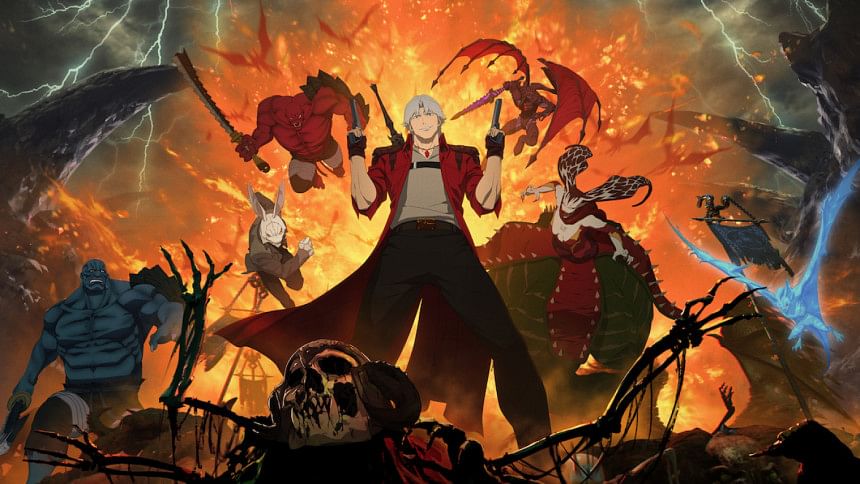Netflix’s Devil May Cry: A reimagining with mixed results

Netflix's Devil May Cry animated series provides a new take on the classic games released by Capcom. While the show has stellar animation and a mostly enjoyable story, it diverges from the source material in polarising ways.
The series primarily follows demon hunter Dante as he tries to stop an invasion from Hell while coming to terms with his childhood trauma and lineage. He is driven towards this quest by a government agency known as DARKCOM and a powerful demonic figure named the White Rabbit, who serves as the main antagonist.
The show does not directly adapt any particular game from the franchise, though it does borrow elements from Devil May Cry 1 and 3 to tell a completely original story. While the games aren't really known for having "deep" stories, there was compelling lore and character development beyond the surface of the action-focused gameplay. This show does stay mostly true to the lore, and adds some nuances to Dante's characterisation in particular, but it also makes some strange choices in the story that feel out of place in the Devil May Cry universe.
But first, it's necessary to highlight the positives about the show. Dante himself is portrayed quite well and retains his aura from the source material. The games are known for having amazing soundtracks, and the show continues that tradition with some new renditions of songs from the games as well as licensed 2000s nu-metal and rock songs, including an original song by Evanescence. The animation and action sequences in the show are absolutely stunning. One episode in particular stands out for its creative use of differing art styles to portray the human and demon realms. That episode, which also reveals the White Rabbit's past, marks itself as the best in the series. The show also features lots of fun easter eggs to the Devil May Cry games as well as other franchises from Capcom.
Now, to the weak parts. While the villain's backstory is well-written, he falls into a particular trope that can be best described as "the villain is actually right—but he must be the bad guy, so let's make him crazy". His villainous actions directly contradict his noble goals and character during the flashbacks, and the show doesn't do a good job in showing that transition into madness. Furthermore, the show deals with some political commentary, particularly with the US Government playing a major role in the events. While it is an interesting take that does add a different side to the human-demon conflict, it does feel a bit off-putting in the context of the Devil May Cry world, as this is an element not present in any of the games.
The weakest aspect of the show has to be the portrayal of Lady/Mary, a fan-favourite character from the games. In Devil May Cry 3, she had an amazing character arc that involved her overcoming childhood trauma caused by her father and changing her perception of demons. This arc contrasted Dante's own trauma and conflict with his brother, Vergil. While some of those elements remain here, she is instead portrayed as a cold government agent who is awfully discriminatory towards demons, to the point where she makes lots of counterproductive choices in the plot. Furthermore, by substituting the White Rabbit for Lady's father from the game, the show takes away the family dysfunction that tied Lady and Dante's stories together. Family conflict is at the core of the series' narrative, and the show missed that point in favor of political commentary.
Overall, Devil May Cry is a fun show with great animation, but it is best enjoyed as an alternate take on the source material. For the true Devil May Cry experience, it's probably best to just play the games instead.

 For all latest news, follow The Daily Star's Google News channel.
For all latest news, follow The Daily Star's Google News channel. 



Comments